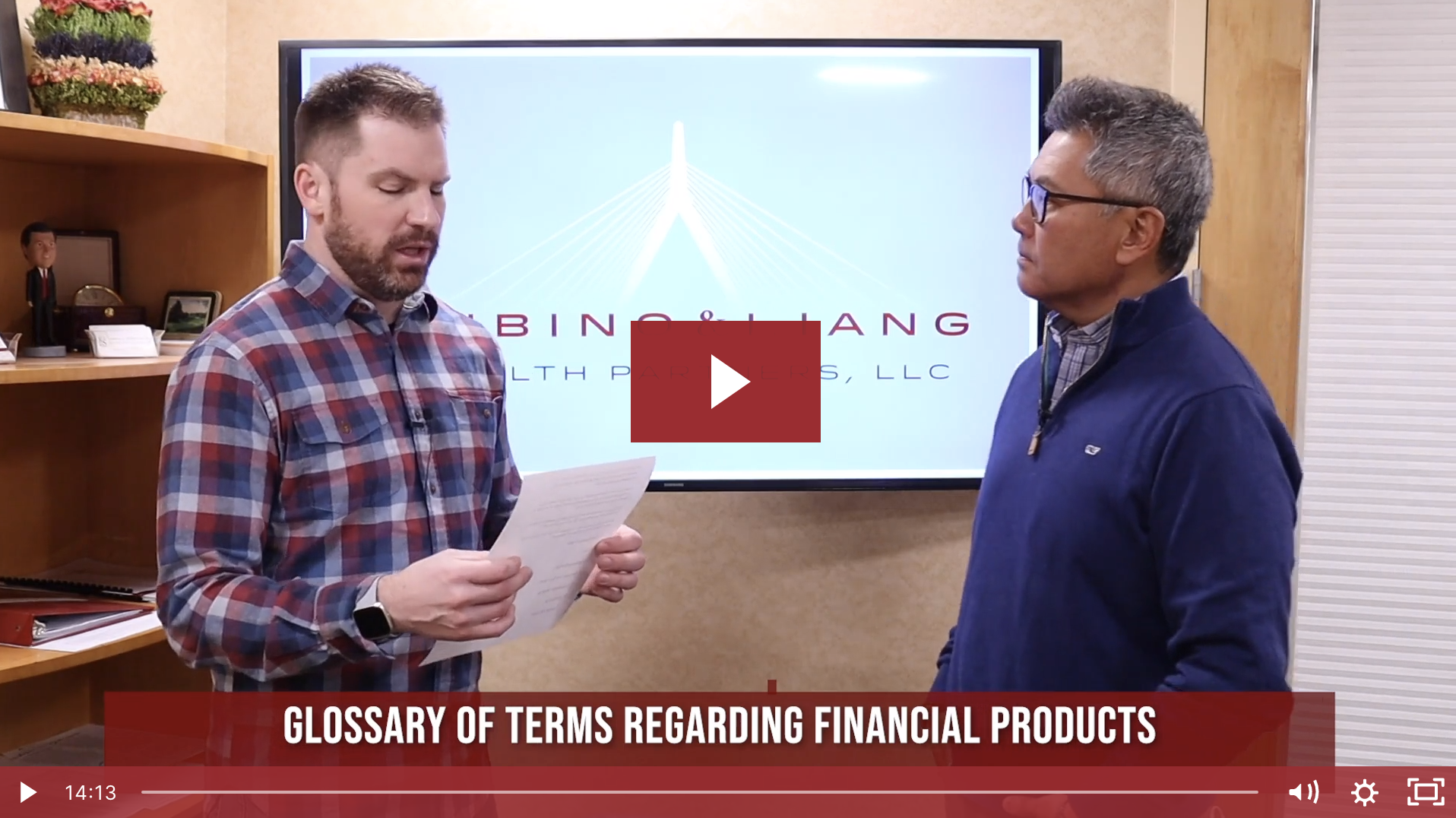What Should You Do About The Coronavirus And Stock Market Volatility?
The financial markets took a big dip early this week over fears about the spreading coronavirus,...
By: RL Wealth Partners Feb 12, 2020 2:40:09 PM


Say WHAT?!?
Sometimes, the language/terms used in retirement income planning aren't exactly the EASIEST to understand (And even things that we THINK we understand, we might not... CASE IN POINT)
This episode of After The Paycheck is designed to help people understand certain terms they may hear after they have met with a financial professional. When a financial professional understands your unique situation and makes recommendations, you may hear them use a lot of terms that will cause your head to spin.
But, what if you were able to have a better understanding of some of the jargon that a financial professional uses when walking you through a specific insurance or investment product?
Here is a glossary of terms to help guide you with some things to know before meeting with a financial professional!
The percentage of the index’s return the insurance company credits to the product. For example, if the market went up 10% and the product's participation rate was 80%, an 8% return (80% of the gain) would be credited.1
An upper limit put on the return over a certain time period. For example, if the index returned 10% but the product had a cap of 5%, you receive only a maximum 5% rate of return. (Some products have both a cap AND a participation rate, so be aware of the language of how the product will be indexed/credited.)1
A fee (usually a percentage) that may be subtracted from the gain in the index linked to the product. So, if an index gains 10% and the spread/margin is 1%, then the product is credited 9% in gains.
The level of credited interest is based on the difference (or a percentage of the difference) of a product over the course of one year. For example, say that the the market you are investing in is at 1,000 at the beginning of when you purchase your product. If that market index increases to 1,100 (a difference of 10%), and is at that mark for the 1st anniversary date, the contract owner would be credited that interest (the ACTUAL amount of interest may vary depending on that product's cap and/or participation rate.)2
A fee/charge/penalty charged for withdrawing (an excess amount of) funds from a product before a certain agreed upon date. Typically assessed as a percentage of the contract value for withdrawals that exceed a certain percentage of the contract value.
For example, a product may have a 7% surrender charge for any withdrawal in excess of 10% of the premiums paid. If you have $100,000 in premiums and withdraw $20,000 in the first year of your contract, the surrender charge would be $700 ($10,000 x 7%). Sometimes a surrender charge can be referred to as a surrender fee or an early withdrawal fee.3
A feature that is normally only found in certain rider options in annuities. To understand how stacking works, there are two amounts to keep in mind – the account value and the income base. A Stacked Income Option rider may stack an amount equal to 100% of the interest credited to your contract’s account value on top of a guaranteed 4% income credit during specific period.
An option that you can request be added on for in certain contracts, (almost always for a fee), that is designed to help generate a guaranteed level of income for life, regardless of your age and if the account runs out of money or not.
Have a list of questions around your finances? Thinking about your retirement situation?
Let’s chat.
Use the calendar below to schedule a 15 minute complimentary introductory call directly with either Sam, John, or Ryan. We'll use this time to get to know you and your needs.
Our 365 Retirement Planning process is designed to create a personal relationship with our clients, taking the time to truly understand their unique personal and financial situation. Just as no two people are alike, we believe no two retirement plans should be, either.
1: https://www.fidelity.com/viewpoints/retirement/considering-indexed-annuities
2: http://www.annuitydigest.com/point-point/definition
3: http://www.annuitydigest.com/surrender-charge/definition
The financial markets took a big dip early this week over fears about the spreading coronavirus,...
The holidays are upon us! If your life is anything like mine, it’s a whirlwind of spending time...
Your retirement is known as “the golden years” for a reason.
Traveling, relaxing, spending more...